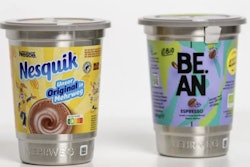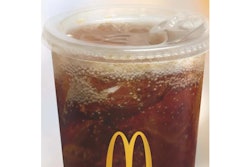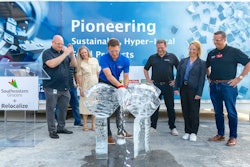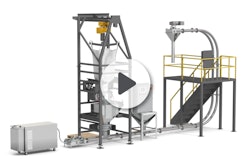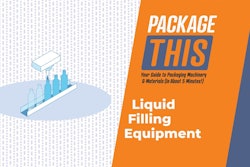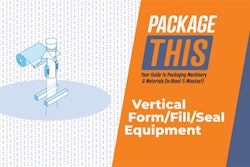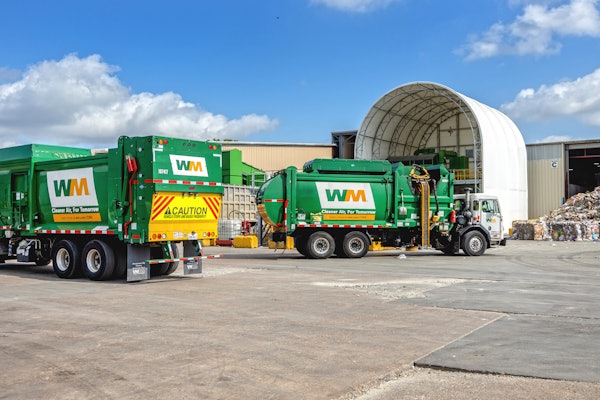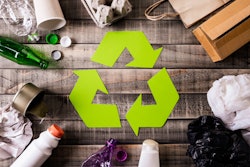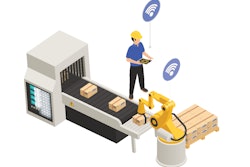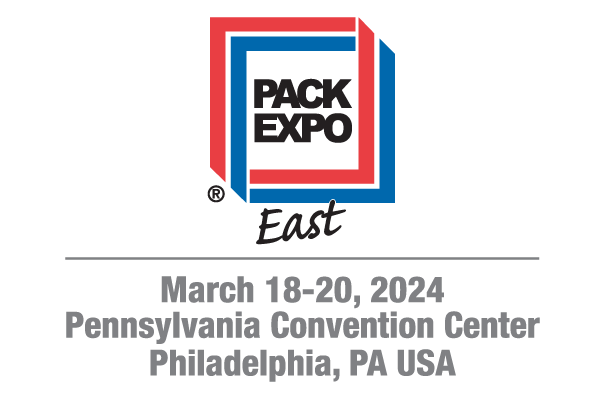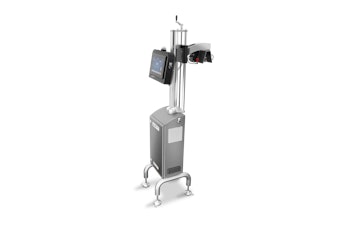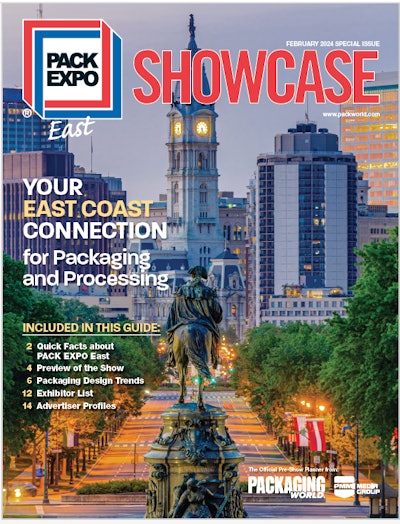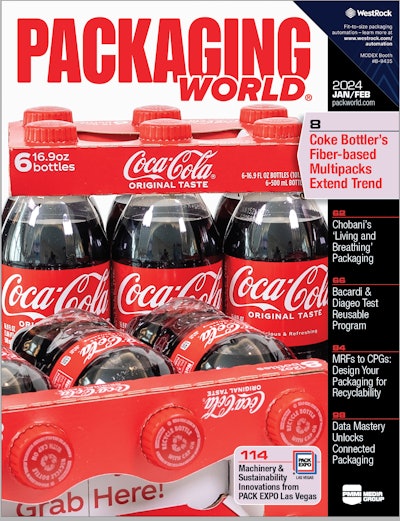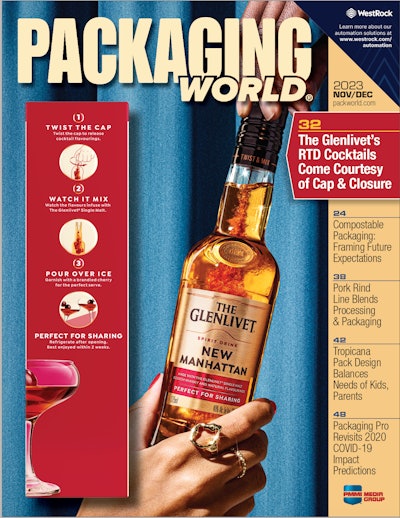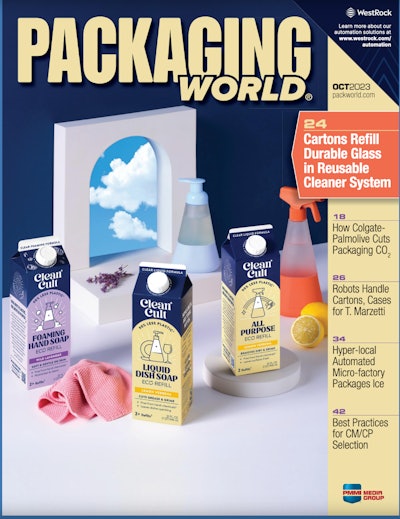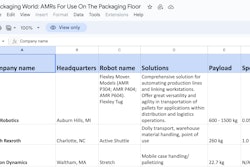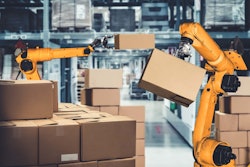Packaging World editors Anne Marie Mohan and Matt Reynolds return to unPACKed for the fifth episode of its six-part sustainability sit-down, turning the spotlight on monolayer materials. All plastics and foils are not created equal, and the complexity that allows them to protect food or beverages, for instance, also makes recycling significantly harder. Mohan and Reynolds cover sustainability and packaging materials daily and discuss how monolayer materials could be one of the major keys to a more sustainable packaging supply chain.
To subscribe, rate, review, and find more unPACKED podcast episodes, visit pmmi.org/podcast or find us on Apple Podcasts, Spotify, iHeart Radio or wherever you listen to your podcasts.
Sean Riley:
So, with all the fancy introductions out of the way, welcome back to the podcast, Anne Marie Mohan and Matt Reynolds. Welcome, Anne Marie.
Anne Marie Mohan:
Nice to be here, Sean.
Sean Riley:
Welcome, Matt.
Matt Reynolds:
Thank you, sir.
Sean Riley:
Pleasure is all mine. One of the first things... Believe it or not, I did not grow up striving to work in the packaging press, although it is something to strive for, children, as these two esteemed colleagues can tell you.
Sean Riley:
One of the first things I learned, and I don't know why, and I feel like a lot of people know this, but I didn't, and I'm not ashamed to admit it, was I went to, it was to judge a packaging contest, I wasn't involved in the judging, it was more just to learn about it. And I was not aware that things like a bag of chips had multiple layers to them. It had a film on the outside, for design, maybe, and a film on the inside for foil to, I don't know, for barrier, it had something else to make it hold up better in old machines that are trying to seal it. And I wasn't aware that there was... It just, to me, feels like one layer. And I think most people when they buy a package, don't think of flexible packaging having multiple layers, whether it's a standup pouch, so many things are in flexible packaging now.
Sean Riley:
So, I understand that there is a desire out there or a move to move to a single layer, a single film, for lack of a better word. Is there a reason for this? Why the move? I guess to kick off with that, what's driving that impetus to get to this one monolayer material?
Anne Marie Mohan:
That's a great question. One of the things that's driving the development of monolayer films for packaging is the fact that with those multilayer constructions that you talked about, you may have three or four different layers of film that are different. So, maybe a PET and a polypropylene and an aluminum. So, with our current recycling infrastructure, we can't separate these layers during recycling. So, flexible packaging has a great story to tell when it comes to sustainability, but one of the things that has been a drawback in their messaging and just basically in the end of life scenario is that it can't be recycled. So, if you have a monolayer film, it could be several layers, but it would be the same material. So, polyethylene, polyethylene, which, if you have a very thin barrier for coding or adhesive, that still means that it can be recycled. So, that's really what's driving the development of these films.
Sean Riley:
So, it's a matter of, once, and again, I'm really simplifying this, but you can get... And you explained it really well to begin with, so you're putting these two plastics and they will go together, but we can't separate them, and I use plastics as a general term, but we can't separate them. So, we can do it if we use two multiple layers of polyethylene, and PET, polypropylene, they're mashed together. But I guess then we wouldn't be able to use something like an aluminum? No? Could that film be in there?
Anne Marie Mohan:
No.
Sean Riley:
No. So, that's where I'm saying, okay, so those films... So, technically it's a monolayer, but it's not really just one layer, it's really a mix of the same thing, which I think you kind of touched on?
Matt Reynolds:
Yeah. Okay. There's a syntax difference between monolayer and mono-material. So, it might be multiple layers-
Sean Riley:
So, maybe that's where I'm confusing, and if I'm confusing the audience, maybe this is something that would be helpful to explain to me.
Matt Reynolds:
Right. So, it could be a multilayer structure, but as long as... One example that I just saw at PACK EXPO East, actually-
Sean Riley:
Mm-hmm. In Philadelphia.
Matt Reynolds:
In Philadelphia, born and raised... was, it's a Pantene product. It was a refill pouch, but it's a PE sealant layer, PE pouch. So, it's really a mono-material. Now, there is a sealant layer in there that adds a barrier to it, but it's maybe only less than 2%, it's a tiny percentage of the overall material. So, that sealant layer, PE can go into the PE stream without [inaudible 00:04:23] that at that kind of ratio or that kind of volume. And the sealant layer itself is the barrier. So, that can be, for instance, recycled in the Japanese stream, because that's a Japanese Pantene product. So, that's the difference. Even though it's multiple layers, it's really mono-material.
Sean Riley:
So, then... I'm sorry, go ahead.
Anne Marie Mohan:
I was just going to add that maybe one thing to clarify too is that even though it may be a monolayer package, it can't be recycled still through your typical blue box recycling, it has to go to the in-store drop off. A lot of retailers, grocery stores, have in-store drop off of polyethylene bags. So, the bags, your newspaper comes in, things like that.
Sean Riley:
When you said the drop off, that's what I was going to say. So, those type of things or the plastic bags that I know we're getting at some municipalities are getting away from, but you used to be able to return them to stores. That would be something where they could be just reused into other bags? Or can they be reused into other types of... or we don't know how they're reused, we just know they can be reused?
Matt Reynolds:
They're reused into whatever the channel. If it's polypropylene, some other form of polypropylene. If it's PE, it's another form of PE, and PET. PET is a different story, because that's rigid or can be rigid. But anyways, it would go back to the original material of the channel it's gone through. But consider that the films being returned to stores, there's really not a whole lot of adoption for that, at least not in society in the United States. It just adds a burden or adds responsibility to the consumer. So, it's a difficulty.
Sean Riley:
Can't be troubled to bring something back to the store and put it in a container to save the Earth.
Matt Reynolds:
But the good news is that there is a growing, whether it's generational shift or whatever it is, but the tide is turning, and people are doing that. Consider this. You mentioned the how to recycle, which is, it's sort of a function of the American Plastics Recyclers, APR. They certify something that is recyclable and then the how to recycle label is added to it, is allowed to be added to it, where it has the three chasing arrow that says store drop off. Consider that, from somebody, let's say, who's into sustainability or at least is choosing their products with that in mind, consider that, where it has the three chasing arrows and store drop off, versus the three chasing arrows with an X through it that says not yet recycled.
Matt Reynolds:
An example that I saw recently I think was PACK EXPO in Las Vegas actually, Clysar has a new film that is certified store drop off, and just consider the distinction for somebody shopping looking at two things, having one that's recyclable and one that's not. So, it's a consumer push there. We just have to get there. We have to get to that threshold, that tipping point [inaudible 00:07:22]
Sean Riley:
All right. So, there's really the three big, and again, I use the term plastic, and we'll say resins, or whatever, films. You got your polyethylene, you got your... I was going to say PET, and then your polypropylenes. So, yeah, that's three. So, give me some examples of how they're being monolayered or mono-materialed in current, currently, in products that might be out there.
Matt Reynolds:
There's a few. One is, Tyson chicken recently came out with a bag. It's a PE and PE. I'm sure there's more in there, whether they're tie layers or... I know it's a printed bag, but there's more involved, but the overall structure is enough PE that it can go into the PE channel that uses Amcor AmPrima, which is one version.
Matt Reynolds:
Another one, polyethylene, but this is the high density stuff, it's Colgate. Colgate Palmolive, this is kind of a big splash technology, because ever since there were toothpaste tubes in modern history that's had aluminum foil template. It's either been all aluminum.... I think at one point... If you rip the old Aquafresh and so on, quite a bit of aluminum on the outside. But right now, Colgate and through their suppliers are moving towards HDPE only. It's omitting the aluminum, and instead using EVOH as an internal barrier layer. Because it's something that you're putting in your body, it's toothpaste. You need to have a barrier layer. And also, with any personal care products, I mentioned the Pantene example, you need that barrier, because a lot of these have perfumes and smells. And could you imagine going aisle if you didn't have that? It's bad enough as it is.
Sean Riley:
Especially if you're allergic to the... Yeah.
Matt Reynolds:
So, those are a couple of examples. I mentioned the Pantene. You mentioned the Mars, the PP standup pouch is another one. There's a lot of examples.
Anne Marie Mohan:
Yes. In the area of polypropylene, Mars introduced a monolayer standup pouch for rice. And this is also microwavable. So, that's another notable improvement in this packaging. They're using Amcor flexibles, AmLite HeatFlex recyclable, high-performing monolayer polypropylene material. So, this material allows that package to retain the shape, the shelf life, the functionality, and the high standards that this product really requires.
Sean Riley:
And-
Matt Reynolds:
Go ahead. I was going to say, they weren't the only ones. FBI Foods came out with one too. And I remember getting the press releases within weeks of each other, both somewhat claiming to be first. So, we were calling it internally, the rice race. Who was getting there first? But the important thing is they're getting there to begin with, and that it's a microwavable, that's there an extra convenience method there for consumer. And it's all one material.
Sean Riley:
Did we hit any? We did. We hit polypropylene, We hit PE, we hit PET. One thing, and we talked about this earlier and that's why I'm bringing it back up, because it's one that sticks for me, is I remember back in the day in packaging, the big deal when the pods came out for coffee. And everybody had to go out and get their Keurigs. There might be other brands, but Keurig will be the one I will use, like the Xerox for copies. Anyway, Keurig, the pods. And what they quickly found out is while these were wonderful for coffee, they were very, very difficult to recycle, because there were so many different things in there. How about in that? Isn't there some developments in that sphere where there's some of these monolayers, mono-materials?
Matt Reynolds:
This is another one that I believe came out of PACK EXPO, one of the PACK EXPOS, and I don't remember which one, it's a joint project between a few companies. One of them was with, one was Säntis, and then on the machinery side was Omega. But it's a seven-layer coextrusion. So, any of these laminations are either laminated or co-extruded. This is a seven-layer coextrusion of a coffee pod. And it's lidded, obviously, but then there's a barrier layer. Again, we talked about the Colgate HDPE uses EVOH. This is another case of EVOH ends up being the barrier there. So it's 98%, in this case it's polypropylene, 98% plus polypropylene, enough to make it easily recyclable within that channel. So, the much maligned coffee pods are now, in this particular example, and again there's a machinery component too, to do some of the lidding on there. But again, all PP coffee pods, and it's a rigid structure.
Sean Riley:
Yeah. And I just remember, again, that came out as this big to-do, and then it immediately got struck down because it didn't have the sustainable property. So, that's good that there is some growth there. Now, having heard all this, and especially this is kind of, because my brain is still stuck on the returning stuff to the store, for a lot of these monolayers, and if you said this already, I apologize, for examples like bringing this stuff to the store, is that the only option that we currently have for these monolayers to be recycled or these things that can go into the single-channel recycling? Or no? It has to be... Like if I have this monolayer PP or this monolayer PE or this monolayer PET, is this going to have to go to a special facility? This has to be returned to a store? Is what you're saying across.
Anne Marie Mohan:
Yes.
Sean Riley:
So, even if it's a rice bag. So, they're going to have to establish a chain at the stores in order to have all this stuff get back into the chain. We're not at the point where I'm putting that at the curb.
Anne Marie Mohan:
Correct. And they do have that stream. So, that's why it's helpful to have a ready-made stream for these materials. But I think another thing to note that we probably didn't talk about, or I don't think we mentioned, is that these are typically downcycled. So it will be in... Trex is a huge recycler of these types of materials, and those will be like the rubber material on playgrounds or benches.
Sean Riley:
That's what I immediately thought of when you said downcycle, that seems to be where all the downcyling goes, or AstroTurf or field turf for sports, they have the little things to replicate dirt to kind of soften this. So, it's just waste. But it's still, again, being reused into another product, which is much better than just sitting in a landfill.
Matt Reynolds:
Yeah.
Anne Marie Mohan:
Yes.
Matt Reynolds:
And I know Glenroy recently got involved with Trex not too long ago, so that's good. But there is always the silver bullet, which is the other option, which, in another podcast we talk about advanced recycling or chemical recycling, molecular recycling. That could be an option as well in the nerf of the future at least.
Sean Riley:
Right, where we're just going to be able to completely reuse it, and that's, fingers crossed, something that we're going to cross down the line. Okay. Well, with that being said, I think we've said enough about mono-materials. So, on that note, thank you again, Anne Marie, thank you again, Matt, and thank you to all the listeners at home.
